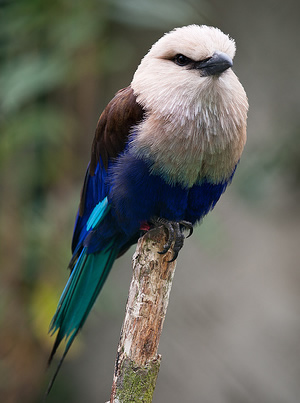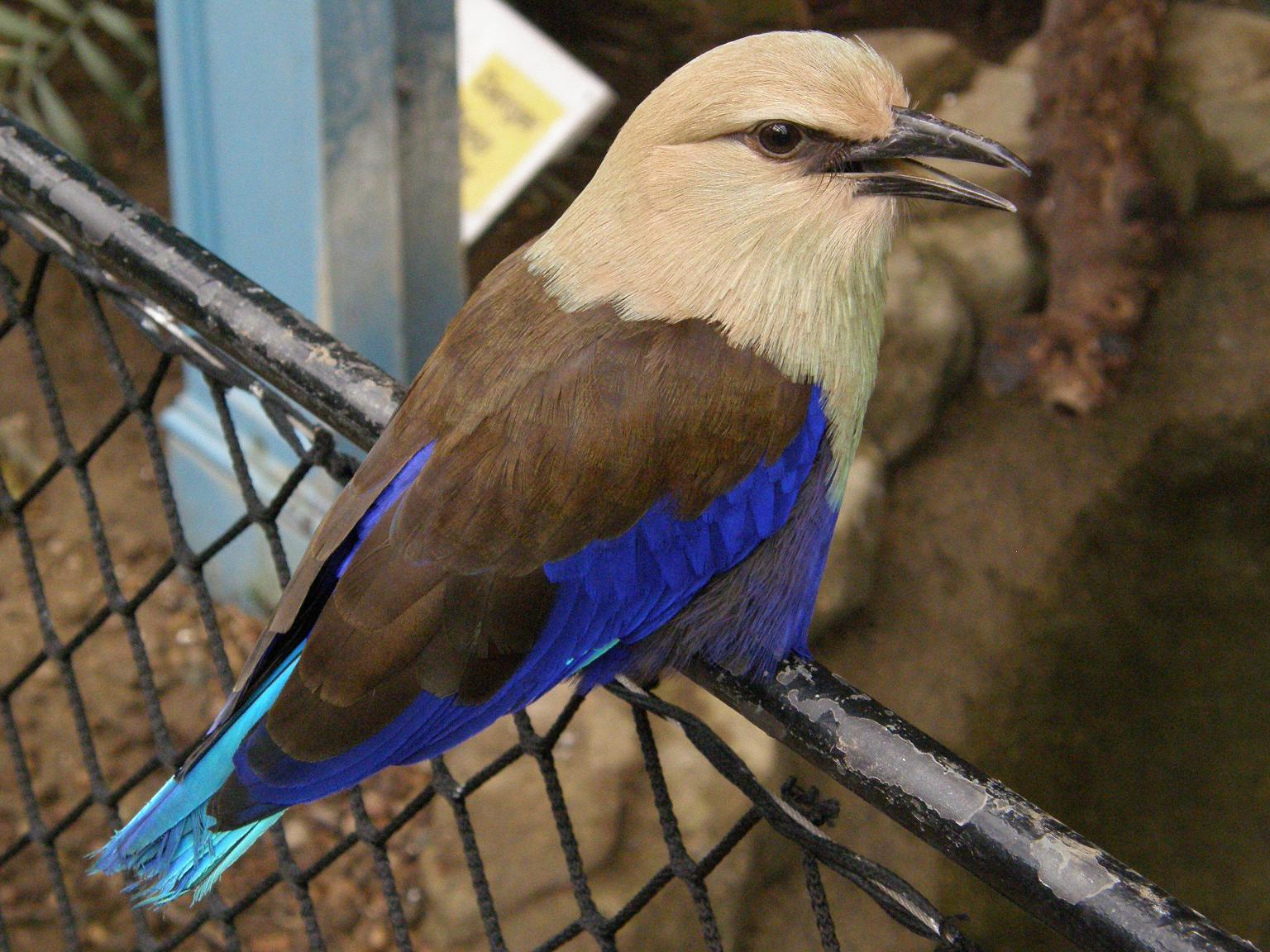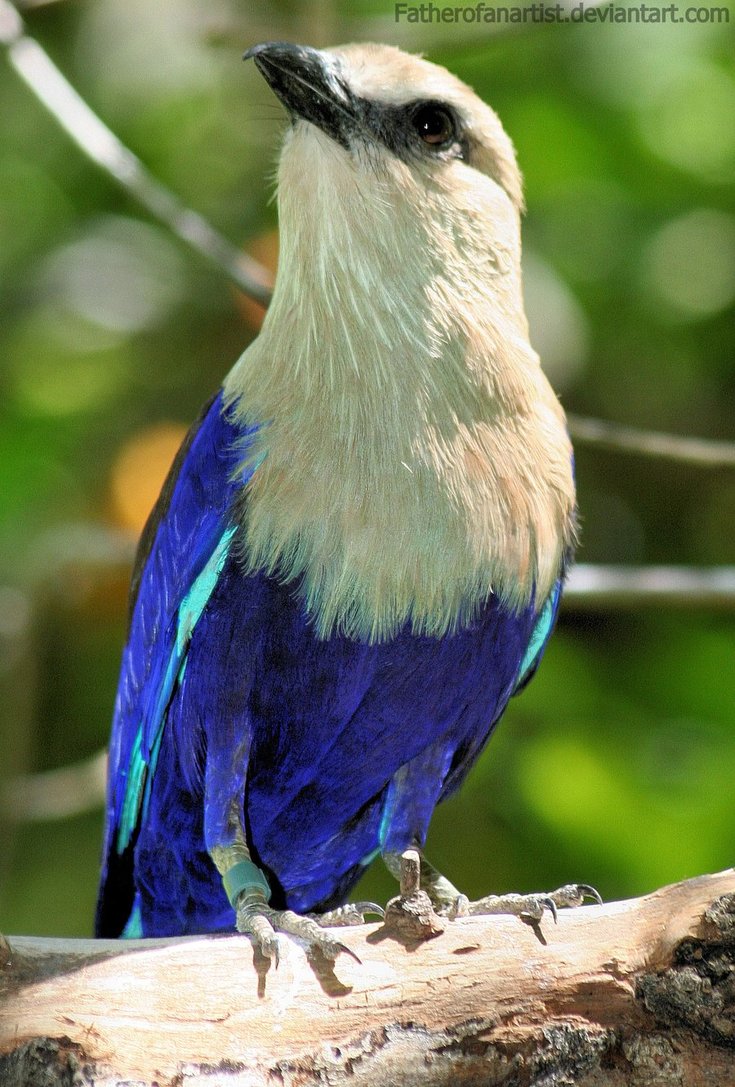
Coracias cyanogaster
TAXONOMY
Coracias cyanogaster Cuvier, 1817, Senegal. Monotypic.
OTHER COMMON NAMES
French: Rollier а ventre bleu; German: Opalracke; Spanish:
Carraca Blanquiazul.
PHYSICAL CHARACTERISTICS
15 in (37 cm); 0.24–0.38 lb (110–190 g). Dark blue with black
back and creamy head and breast.
DISTRIBUTION
Western Africa, from Senegal to southernmost Sudan.
HABITAT
Favors Isoberlinia woodland, also forest clearings and plantations.
BEHAVIOR
Partial migrant. In small groups, roosting together and occupying
favored haunts. Conspicuous when sitting on exposed
hunting perch or in overhead flight, but noisy only in breeding
season.
FEEDING ECOLOGY AND DIET
From high-vantage perch flies down to take large invertebrates
and small reptiles on ground below; some flying insects captured
in flight. Prey repeatedly struck against ground or perch
before swallowing; regurgitates undigested remains in pellets.
REPRODUCTIVE BIOLOGY
Poorly known. Monogamous or polygamous, males being more
numerous. Defends nesting territory. Aerial chases and rolling
flights in courtship. Breeding during wet season, mainly
April–July; nest in tree hollow.
CONSERVATION STATUS
Not threatened. Common in west, less numerous in east.
SIGNIFICANCE TO HUMANS
Admired as most colorful roller.
Other popular Animals
Photo Gallery of - Blue-bellied roller




 Animalia Life
Animalia Life